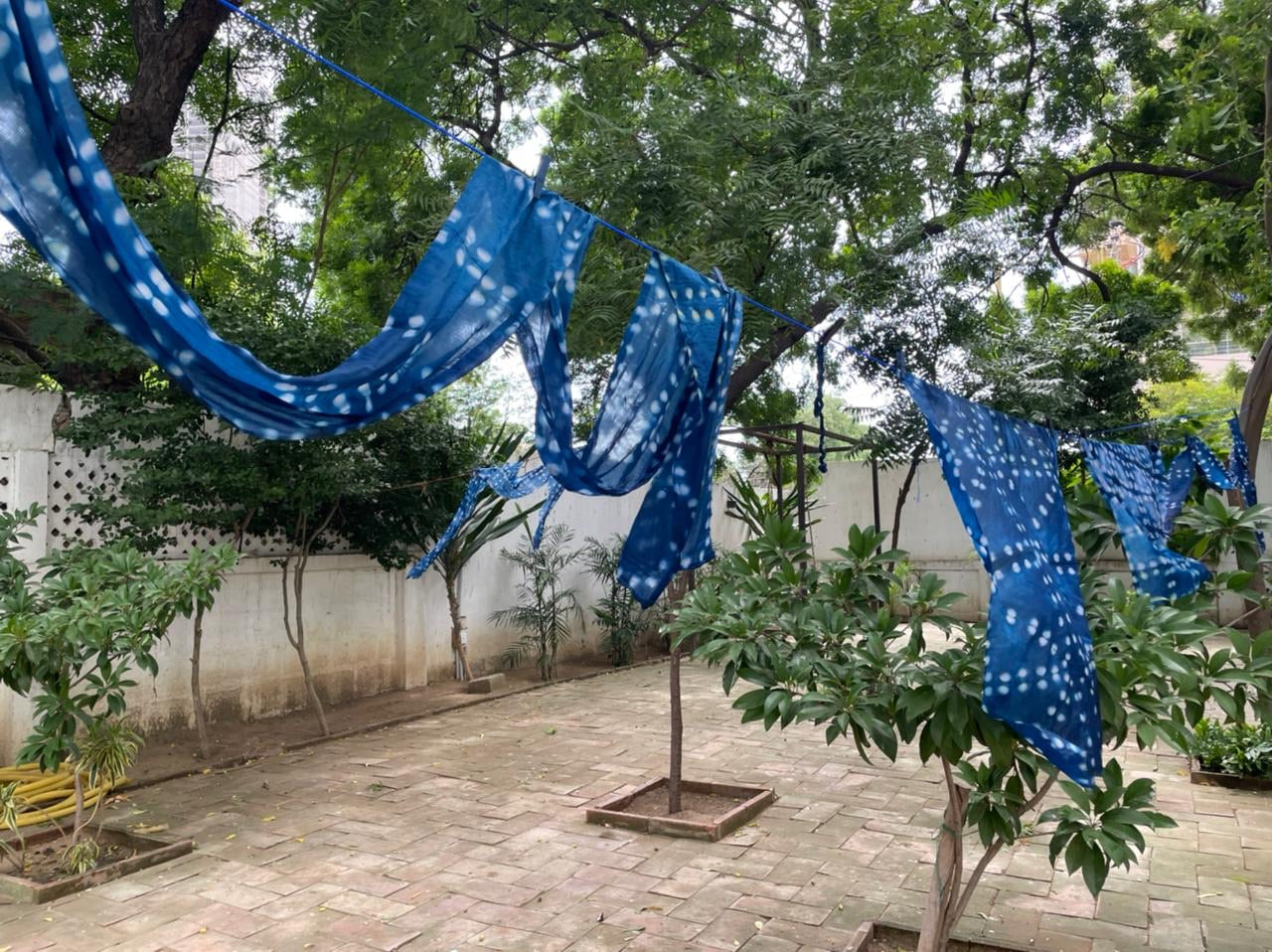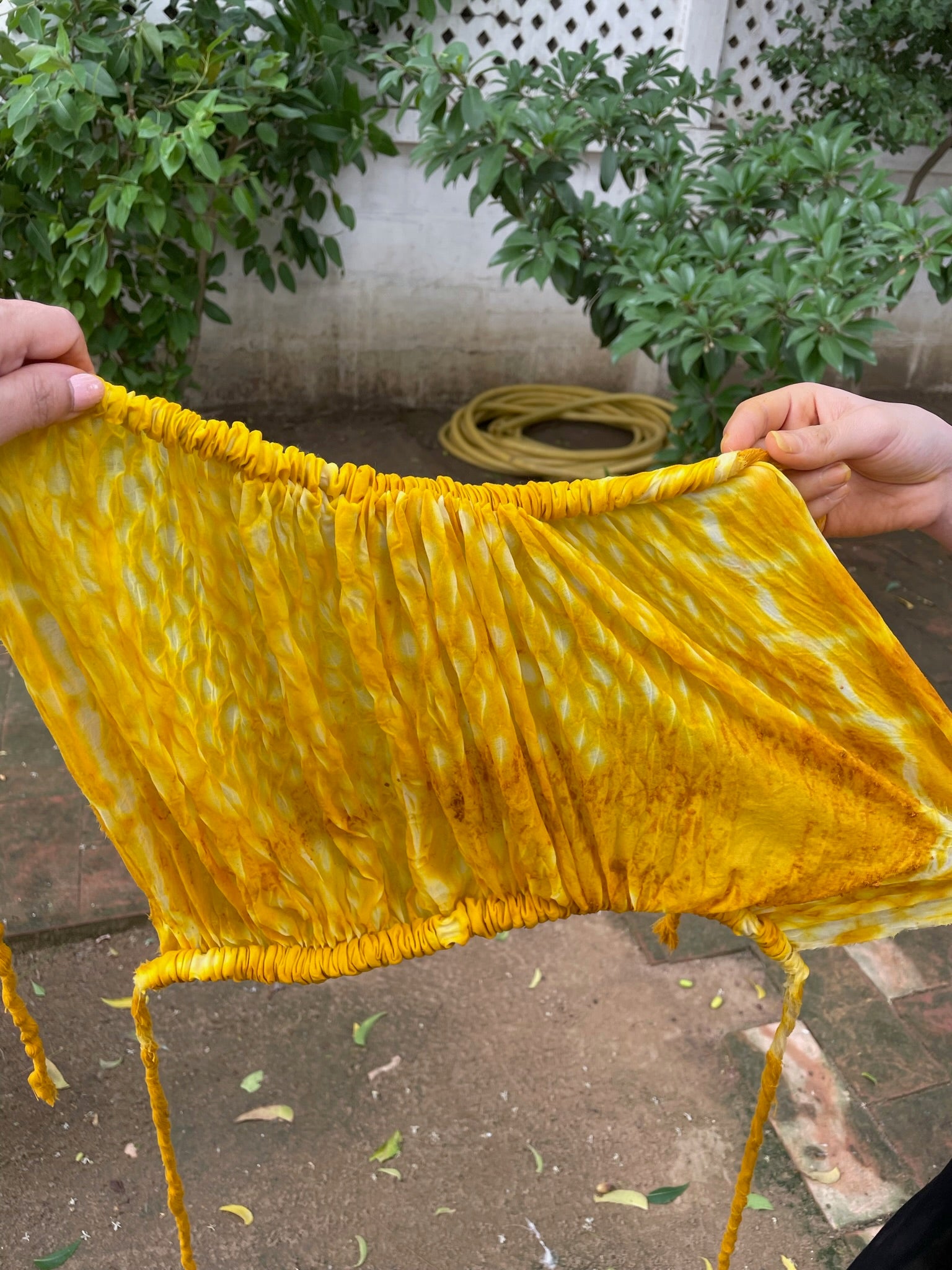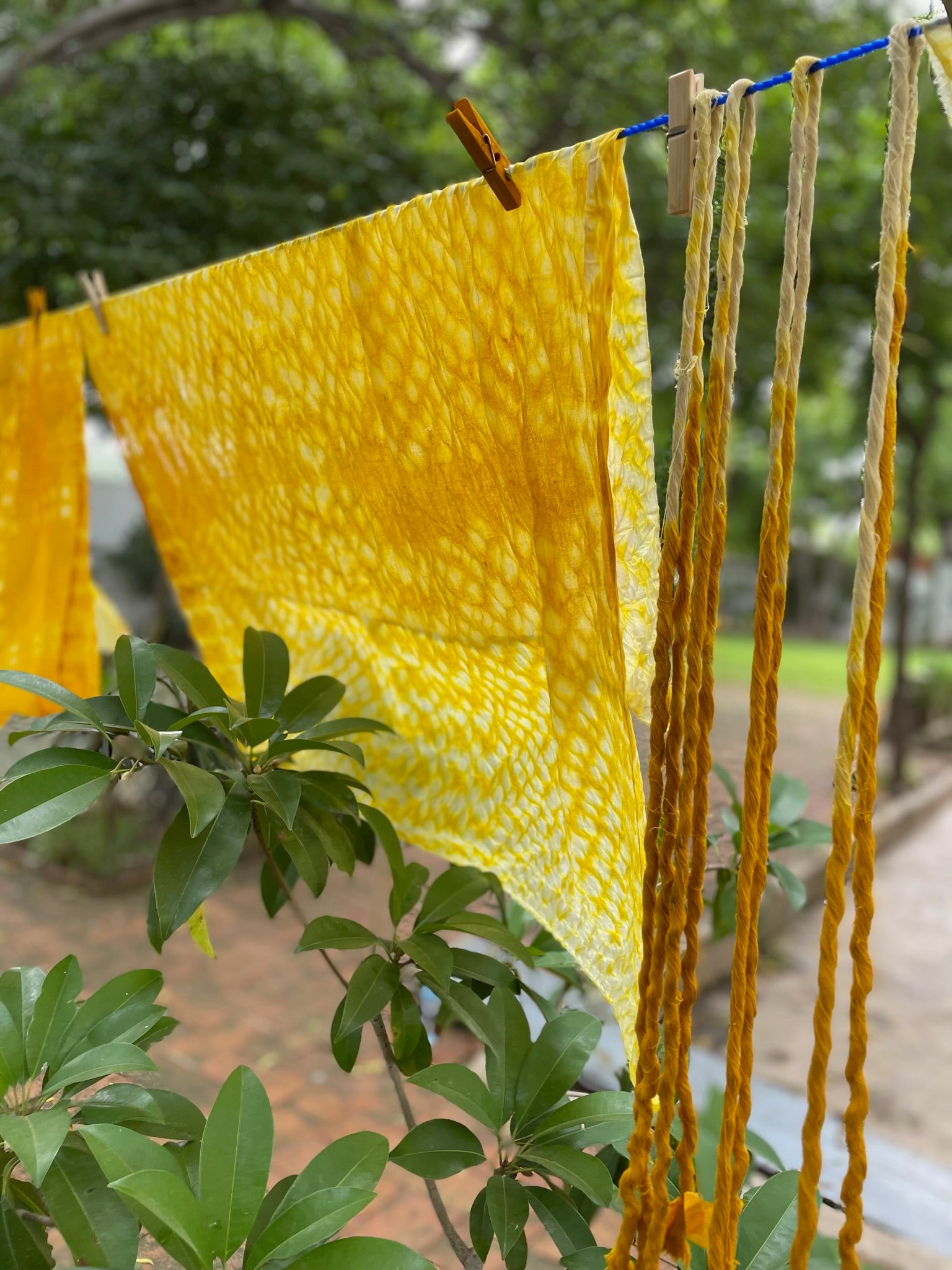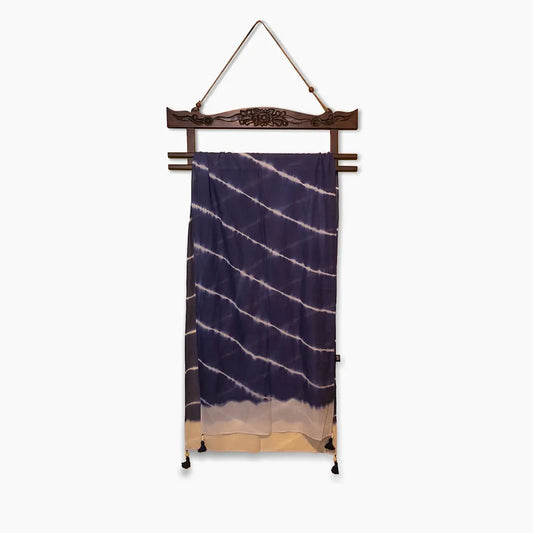Thar, Sindh
Bandhni
Bandhni, also known as Bandhej, is one of the oldest and most intricate textile crafts in South Asia, particularly practiced in Sindh, Pakistan, and Gujarat, India. This traditional tie-dye technique, whose name derives from the word "bandh", meaning "to tie", involves binding small sections of cloth to create patterns before dyeing. The result is a beautiful tapestry of vibrant colors and intricate dots, swirls, and circular motifs.
Dating back over 5,000 years, Bandhni holds deep cultural significance, often used for special occasions like weddings, festivals, and religious ceremonies. Each piece of Bandhni is a unique work of art, rich with heritage and symbolism, making it a beloved staple of traditional Pakistani clothing, especially in regions where the craft originated.



Collapsible content
Craftsmanship and Techniques
Creating Bandhni is a painstaking process that requires skill, precision, and dedication. Each piece is entirely handmade, ensuring that no two pieces are ever identical. The process involves several intricate steps:
1. Tying the Fabric
The craft begins by tightly tying small sections of fabric with thread. Each knot, or “tie,” acts as a resist, protecting the fabric underneath from the dye. The placement and pattern of the ties determine the final design, which can range from simple dots to complex, swirling patterns. Artisans, often women who have mastered this skill over generations, carefully map out where each knot will be, ensuring symmetry and artistry.
2. Natural Dyeing
Once the fabric is tied, it is immersed in vats of dye. Traditional Bandhni uses natural dyes made from plants, roots, and flowers, though modern variations may include synthetic dyes for a broader range of colors. After dyeing, the fabric is washed, and the threads are carefully removed to reveal the patterns beneath.
3. Color Variations and Patterns
What makes Bandhni truly distinctive is the layering of colors and patterns. Often, multiple rounds of dyeing are done on the same piece, creating complex, multicolored designs. The small dots or “bhindis” created by the ties form floral motifs, waves, and other intricate designs. Colors like red, yellow, green, and blue are traditionally favored, each carrying its own symbolism in Sindhi culture—red for prosperity, yellow for happiness, and green for growth.
4. Final Touches
Once the dyeing process is complete and the knots are undone, the fabric is stretched out to dry in the sun. The tight knots and careful dyeing result in the characteristic dotted patterns that make Bandhni so recognizable and cherished.
Cultural and Historical Significance
Bandhni is deeply intertwined with the cultural fabric of Sindh and holds a special place in the hearts of people across Pakistan. It’s especially popular during weddings and festivals, where brides often wear red Bandhni dupattas (shawls) or saris as a symbol of good fortune. The patterns and colors of Bandhni are often chosen with great care, reflecting the occasion’s significance and the wearer’s identity.
This craft also plays a role in everyday life, as Bandhni fabrics are worn during religious ceremonies or presented as gifts to mark important milestones. For centuries, Bandhni has served as a cultural marker, passed down through generations as both a skill and a form of artistic expression.
Historically, the art of Bandhni was practiced by various artisan communities in Sindh, with each region developing its own distinctive style. The patterns and techniques have evolved, but the essence of the craft remains rooted in its ancient origins.
Modern Relevance
In today’s world, Bandhni remains as cherished as ever. Modern designers are adapting this ancient craft for contemporary fashion, incorporating it into clothing, scarves, home textiles, and accessories. While traditional Bandhni saris and dupattas are still popular, there is growing demand for Bandhni-inspired modern apparel, from casual tops to high-fashion pieces.
Internationally, Bandhni has found a new audience, with its organic patterns and sustainable production methods appealing to those who appreciate handcrafted, eco-friendly textiles. The slow, intentional process of Bandhni-making has also contributed to its status as a symbol of sustainable fashion, with many artisans continuing to use natural dyes and organic fabrics.
In Pakistan, the craft is not only a source of livelihood for countless artisans but also a way to keep the cultural heritage alive in the face of industrialization. Local markets, cultural festivals, and international fashion shows now celebrate Bandhni as a timeless art form that beautifully blends tradition with modern trends.
Shop Bandhni products
-
Tie-Dye Scarf
Regular price Rs. 3,000Regular priceUnit price / per

